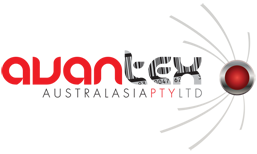DCIM Helping Managing Critical IT Infrastructure in the Current Pandemic
By: Paul Goodison
I have been speaking to our global customers about the operational changes they have introduced during the COVID-19 pandemic. I’ve also had the opportunity to hear a few analysts speak on best practices for data center operations during this time.
The universal approach appears to be keeping as many staff as possible away from the site, working remotely and leveraging onsite smart hands when available. Where team members do have to attend site, managers are ensuring social distancing and maintaining the smallest number of people working in the raised floor space possible. From a hygiene perspective, either in-house or external cleaning services are being used to clean and protect work areas regularly, and at least every shift. There does not appear to be any consensus on what, if any, cleaning to conduct inside the data center.
Our customers have told us how much help their DCIM solution has been during this disruption. It is enabling them to manage their data centers, co-location, and IOT sites while minimizing the need for physical access. One customer told us about automating what used to be a manual task of cycling power to a (dual-powered) server. This is usually a manual unplug process, as there are no trusted records of what PDU sockets a device is plugged in to. But with trusted, mobile captured connectivity records, devices outlets are cycled remotely from within DCIM, saving a person traveling to a site. Working to an incredibly tight deadline a healthcare trust who uses DCIM recently used Cormant-CS to manage the deployment of all the IT infrastructure to a new, pop-up, hospital that was constructed inside a convention center. All the equipment deployment and data outlet connectivity were planned, tracked and deployed to ensure everything was going to work the first time.
We have also seen customers use more of their DCIM then they have before. While using Cormant-CS to plan change is, pretty much, standard practice, not every customer uses the workflow engine. Workflow tasks help automate the planning process and allow for remote collaboration around the server, network, storage, infrastructure and facilities teams. By getting this right, down to the connections and even cables to use, some customers have been able to reduce the number of people that have to touch devices being deployed, reducing the potential infection risk to staff and the enterprise risk that is present if key personnel have to isolate and can’t work. It’s not just the deployment part that is easier with DCIM, directing smart hands, managing equipment receiving, knowing where equipment is and accessing it directly, is all much easier, and involves less physical interaction, when data is available on everyone’s smartphone and devices can be checked with just a barcode scan.
I’m proud of how Cormant-CS is keeping people safe, enterprises operational, and lowering the risk for both parties. One comment I received was, “I didn’t realize how much we relied on the data in Cormant DCIM until I had to work remotely, it’s been invaluable”.
If we can help you work better, please let me know. Cormant is fully operational, and with our remote deployment practices, we can get your data in a single repository quickly.
Stay Safe

Leave a Reply
Want to join the discussion?Feel free to contribute!